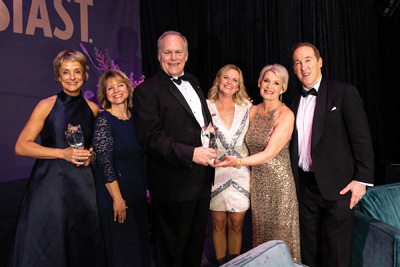For Sale—The Country’s Largest Wine History Collection
 It all started with corkscrews. Jim McCormick would travel the country seeking out unique corkscrews to buy and sell to high-end collectors and add to his own collection. "Eventually, I realized that there were other great things in the wine world out there, like wine history memorabilia and historical artifacts: Pieces that today’s wine industry is built upon," he says. "So, from corkscrews, I started buying other items: posters, wine making tools and implements, early advertising, the history of California wine bottles and labels, ephemera; everything that told a story of California’s rich wine history."
It all started with corkscrews. Jim McCormick would travel the country seeking out unique corkscrews to buy and sell to high-end collectors and add to his own collection. "Eventually, I realized that there were other great things in the wine world out there, like wine history memorabilia and historical artifacts: Pieces that today’s wine industry is built upon," he says. "So, from corkscrews, I started buying other items: posters, wine making tools and implements, early advertising, the history of California wine bottles and labels, ephemera; everything that told a story of California’s rich wine history."
McCormick keeps most of the fragile and rare pieces in a studio in downtown Petaluma (viewings available by appointment), but the majority of the more than 4500-item collection is housed in warehouses outside town. His efforts are to preserve the history and heritage of the California wine industry from pre- through-post Prohibition.
McCormick hoped his California Wine Museum would find a home in Wine Country (There is no official wine museum in the State of California—a $32.9 billion industry.). "I think it’s a shame that we don’t have a venue where the 23.6 million visitors that come to Wine Country can learn about wine, it’s evolution in California and the pioneering families whose roots still anchor the industry today," he says. "Did you know the first California wines were fermented in redwood vats instead of French oak? Or, that during Prohibition, each household was allowed to make 200 gallons of wine each year for their personal use?"
wine museum in the State of California—a $32.9 billion industry.). "I think it’s a shame that we don’t have a venue where the 23.6 million visitors that come to Wine Country can learn about wine, it’s evolution in California and the pioneering families whose roots still anchor the industry today," he says. "Did you know the first California wines were fermented in redwood vats instead of French oak? Or, that during Prohibition, each household was allowed to make 200 gallons of wine each year for their personal use?"
Unable to fund his own museum, McCormick promoted the California Museum idea to the wine community. After four different contractual attempts with nonprofits and the private sector, funding was never achieved. "The biggest loss was the project where the California Wine Museum collection was to anchor the paramount $18 million, newly-renovated Museum on the Square building in Santa Rosa. There was a change in direction for the nonprofit Wineseum, but I still hold hope that when and if something happens, I can be of use.
"However, while I’m still hoping for a museum, the entire collection is now up for sale by the piece, in lots, as collections or as a museum. I have enough to put three museums together," he says. McCormick is willing to sell to museums, collectors, winery tasting rooms and wine lovers.
McCormick says he would like to see the collection go where it is appreciated. Many of his artifacts are from historical wineries "My items can be leased or rented, too," he adds. The entire California Wine Museum collection can be viewed online.
Brush up on Paint Cleaners
 Most modern paint solvents and brush cleaners are petroleum-based, which means application, use and disposal of leftover solvent is a delicate task because water can’t break down the chemicals that make it up. Additionally, people who suffer petroleum allergies need to be extra careful, as skin contact with them can cause adverse effects.
Most modern paint solvents and brush cleaners are petroleum-based, which means application, use and disposal of leftover solvent is a delicate task because water can’t break down the chemicals that make it up. Additionally, people who suffer petroleum allergies need to be extra careful, as skin contact with them can cause adverse effects.
Dizzolve Brush Cleaner was designed with environment and safety in mind, using biodegradable plant-based products to replace the petroleum. Not only is it brain and skin safe, the cleaner is also non-flammable.
Whether it’s an artist trying to revive their brushes after an acrylic portrait session, a house painter prepping their tools for the next days’ job, or an ecologically-minded individual looking for an alternative choice for regular paint thinner, the Dissolve Brush Cleaner provides as much power as its petroleum-based competition, but won’t leave customers dizzy or itchy from the fumes or accidental contact.



